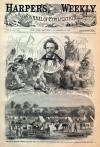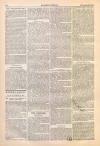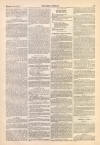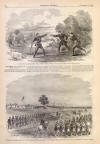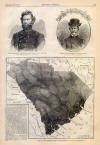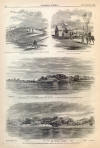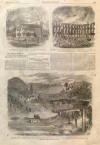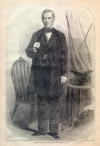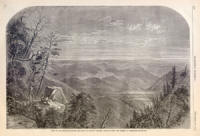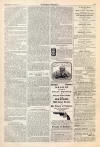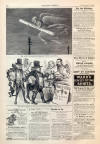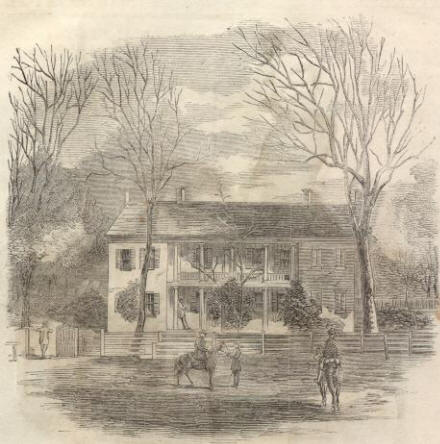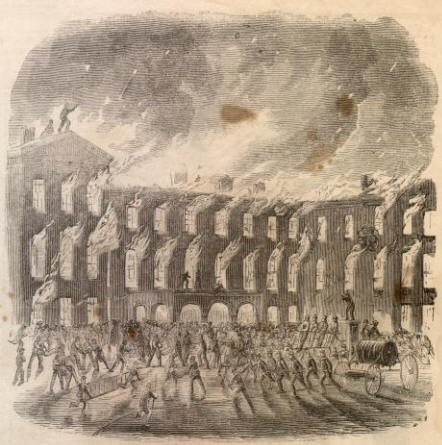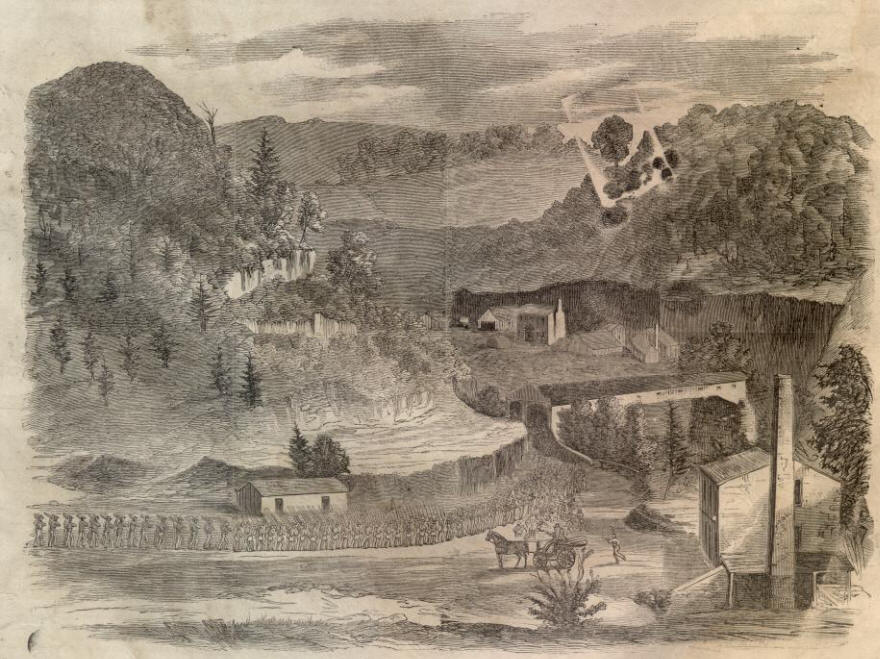|
This Site:
Civil War
Civil War Overview
Civil War 1861
Civil War 1862
Civil War 1863
Civil War 1864
Civil War 1865
Civil War Battles
Confederate Generals
Union Generals
Confederate History
Robert E. Lee
Civil War Medicine
Lincoln Assassination
Slavery
Site Search
Civil War Links
Civil War Art
Revolutionary War
Mexican War
Republic of Texas
Indians
Winslow Homer
Thomas Nast
Mathew Brady
Western Art
Civil War Gifts
Robert E. Lee Portrait
|
HEAD-QUARTERS AT CAMP DICK ROBINSON, NEAR
BRYANTSVILLE, KENTUCKY. [SKETCHED BY MR. ALFRED E. MATTHEWS.]
BURNING OF THE GOVERNMENT HOSPITAL IN E STREET,
WASHINGTON, NOVEMBER 4-RESCUE OF THE SICK AND WOUNDED.-[SKETCHED BY OUR
SPECIAL CORRESPONDENT.]
THE WAR IN KENTUCKY.
WE publish on this page two
illustrations of the WAR IN KENTUCKY, from sketches sent us by Mr. Alfred E.
Matthews. He writes as follows:
CAMP DICK ROBINSON, KENTUCKY,
Nov. 1, 1861.
Herewith I send you two sketches
of the campaign in Kentucky. One represents the Ohio Thirty-first Regiment
crossing the Kentucky River at Boone's Knob. Additional interest is given to
this locality from the fact that it is a prominent place in the life of Daniel
Boone. It was here he escaped from the Indians, who were pursuing him down the
river in canoes, by paddling up a small creek near the knob on the left. He
secreted himself in this knob five days. From this circumstance it is called "
Boone's Knob." It stands isolated from the other bluffs, and at that time, the
river being very high, was entirely surrounded by water,
so that he paddled round it in
his canoe. The other sketch is Dick Robinson's House, which is head-quarters at
Camp Dick Robinson.
BURNING OF A MILITARY
HOSPITAL.
ON this page we illustrate the
DESTRUCTION BY FIRE OF THE MILITARY HOSPITAL in E Street,
Washington, which took place on 4th inst. The
sketch was taken by our special artist correspondent, who happened to be there
at the time. The Washington Star thus relates the affair :
This morning, at a very early
hour, the E Street Hospital, better known as the Washington Infirmary, was
discovered
to be on fire. It contained at
the time from ninety to one hundred sick and wounded soldiers, and a
considerable number of other Government patients. The fire is believed to have
originated in a defective flue from the furnace, which was located in the cellar
under the addition which projected from the centre of the main building in the
rear. The rooms of the Sisters of Charity were in this addition—over the
furnace—and the three medical cadets had a room on the floor above. The rooms of
the Sisters were filled with smoke about half an hour after midnight, and the
Sister Superior first gave the alarm. They had barely time to hurry on their
clothing and escape, leaving every thing but the clothing they had on in the
burning building. Their cries brought in the guard, and soon the alarm became
general. Doctors Rodman, Hutchins, and Allen, the cadets above alluded to, lost
all their personal effects, with the exception of the clothing which they
hurriedly put on to leave the burning building. The Metropolitan police were
soon upon the ground and ran through
the house arousing all the
inmates; and about this time the scene was awful in the extreme.
All of the sick and wounded able
to rise wrapped the bed-clothing around them and escaped from the building, and
the shrieks of those unable to do so were terribly piercing, and thrilled the
hearts of all who heard them. The citizens present, the officers of the
institution, and the Metropolitan police were all active in rescuing the weaker
patients, who had to be taken up bodily and brought through the smoke and flames
to a place of safety. Some were carried to the City Hall, some to the
school-house on Judiciary Square (a hospital for some time past), some to the
former quarters of Griffin's battery, some to Old Trinity Church on Fifth
Street, and many to private residences in the neighborhood. It is believed by
the officers of the institution that all the patients were rescued. An aged
woman, named Mrs. Hussey, who was sent to the infirmary some time since by the
Commissioner of Public Building, has been missing, but has since been found.
THE THIRTY-FIRST REGIMENT OHIO
VOLUNTEERS (COLONEL WALKER) CROSSING THE KENTUCKY RIVER AT BOONE'S KNOB, OCTOBER
2, 1861.
[SKETCHED BY MR. ALFRED E. MATTHEWS.]
|
